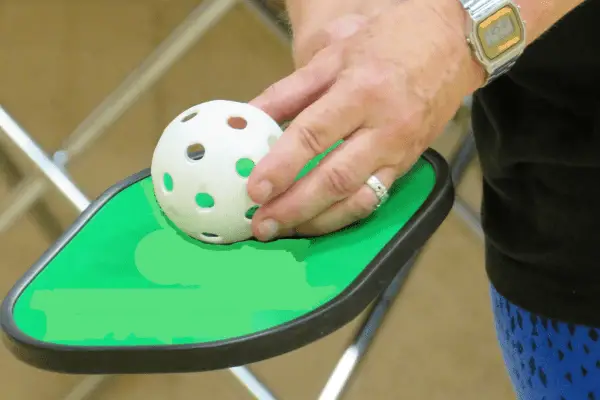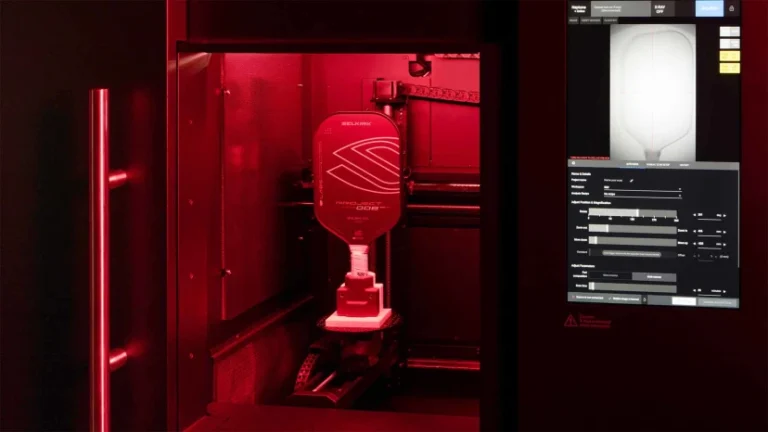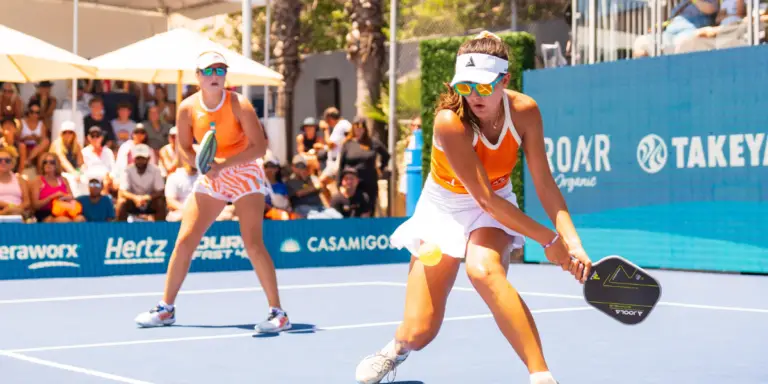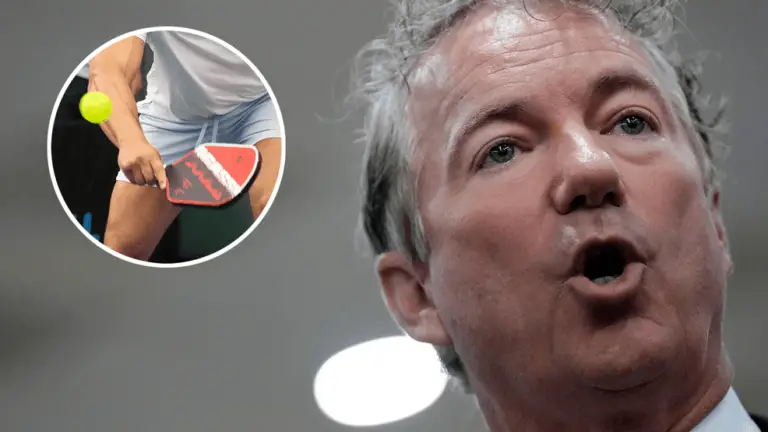Discover how long does a pickleball ball last and learn tips to extend its lifespan. Get insights into storage, maintenance, and when to replace them. A comprehensive guide to keeping your pickleball game going strong.
Introduction:
If you’re a pickleball enthusiast, you know the importance of using a durable and reliable ball for your game. Pickleball balls come in various materials and qualities, but how long do they last?
In this article, we’ll delve into the factors that affect the longevity of pickleball balls, tips to prolong their lifespan, and signs indicating it’s time to replace them. Whether you’re a casual player or a seasoned pro, understanding how long pickleball balls last can significantly enhance your gaming experience
How Long Does a Pickleball Ball Last
It depends on various factors like environment, courts, quality of the ball, and storage condition. The life span of outdoor and indoor pickleball differs because of the playing intensity and game rules.
.
How Long Do Outdoor Pickleball Balls Last?
Outdoor pickleball balls come in various materials such as rubber, plastic, and synthetic, each with varying levels of durability. This results in a wide range of lifespans for these balls.
On average, most outdoor pickleball balls will endure approximately 12 to 20 games before requiring replacement. However, the actual lifespan of a ball will be influenced by the specific conditions of the environment in which it is used.
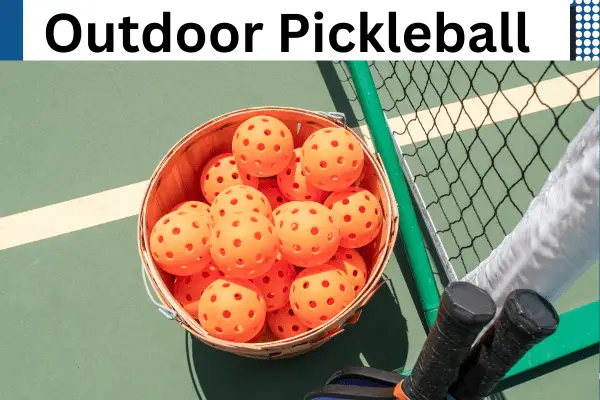
How Long Do Indoor Pickleball Balls Last?
Several factors influence the performance of a pickleball, including the type, level, and condition of the court. Indoor pickleball balls, in general, tend to hold up for about 3-5 games before requiring replacement.
However, if the ball is subjected to intense competition or used at a highly skilled level, its lifespan may reduce to only 1-2 games. Moreover, the ball’s material also plays a role in determining its longevity; a softer ball is likely to wear out faster than a harder one.
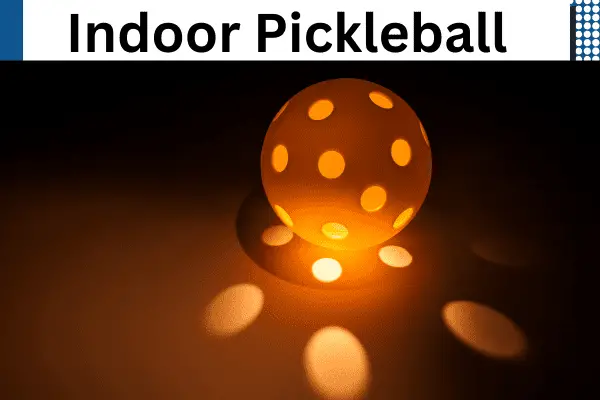
Lastly, the court’s surface also affects the ball’s durability.
Read More: How Many Holes In An Outdoor Pickleball: Unraveling The Mystery
Material Composition of Pickleball Balls
The material of a pickleball ball plays a crucial role in determining its lifespan. The most common types are:
Durable Plastic: Often used for outdoor play, these balls have a thicker construction and can last longer.
Indoor-Use Balls: Typically made of a softer plastic, these balls are designed for indoor play and may have a shorter lifespan compared to outdoor balls.
Factor affecting the life spin
1. Frequency of Play
The more frequently you play pickleball, the faster the balls wear out. Regular use stresses the ball’s surface, impacting its bounce and performance over time.
2. Playing surface
The playing surface also influences the ball’s wear and tear. More complex surfaces, such as concrete or asphalt, can be more abrasive on the balls, reducing lifespan.
3. Storage Conditions
Proper storage is vital to preserve the quality of pickleball balls. Exposure to extreme temperatures or moisture can degrade the balls faster, affecting their durability.
4. Quality of Pickleball Balls
Investing in high-quality pickleball balls can make a significant difference in their lifespan. Premium balls are often designed with durability in mind and can withstand more extensive use.
5. Player’s Skill Level
The intensity of the game can impact the balls’ longevity. More powerful shots or aggressive gameplay may stress the balls more, leading to faster wear.
6. Environmental Factors
Weather conditions, such as high humidity or extreme heat, can influence the materials of the pickleball balls, potentially shortening their lifespan.
7. Impact of Pickleball Paddles
The type of pickleball paddles used can also affect the balls’ longevity. Some paddles may cause more wear and tear on the balls due to their surface texture or material.
8. Cleaning and Maintenance
Regularly cleaning and maintaining your pickleball balls can extend their life. Removing dirt and debris helps retain their bounce and performance.
9. Rotation of Balls
Rotating the use of pickleball balls during play can distribute wear more evenly, helping to prolong their overall lifespan.
Read More: Is Pickleball Easier Than Tennis? Explained Briefly
How to Prolong the Lifespan of Pickleball Balls
Now that we’ve explored the factors affecting the longevity of pickleball balls let’s delve into practical tips to extend their lifespan:
1. Store the Balls Properly
Store your pickleball balls in a cool, dry place away from direct sunlight and extreme temperatures when not in use. Consider using a ball container to protect them from humidity.
2. Use Indoor Balls for Indoor Play
If possible, use indoor pickleball balls for games played on indoor courts. Indoor balls are designed to withstand softer indoor surfaces and last longer when used appropriately.
3. Reserve Outdoor Balls for Outdoor Play
Likewise, outdoor pickleball balls are better suited for outdoor play on rougher surfaces. Using them indoors can wear them out faster, impacting their performance outdoors.
4. Inspect for Damage Regularly
Before each game, inspect your pickleball balls for cracks, dents, or any visible damage. Damaged balls can compromise gameplay and should be replaced immediately.
5. Clean the Balls After Each Use
Wipe the pickleball balls with a damp cloth after each game to remove dirt and debris. This simple cleaning routine can help maintain their bounce and performance.
6. Rotate the Balls During Play
If you have multiple pickleball balls, rotate their usage during games to distribute wear evenly.
7. Choose High-Quality Balls
Invest in reputable brands known for producing high-quality pickleball balls. While they may be slightly more expensive, their durability will make them a worthwhile investment.
Signs It’s Time to Replace Pickleball Balls
Even with proper care and maintenance, pickleball balls will eventually wear out. Here are some signs that indicate it’s time to replace them:
1. Loss of Bounce
When a pickleball ball loses its bounce and becomes noticeably flat, it’s time for a replacement. A worn-out ball affects gameplay and fairness.
2. Visible Cracks or Damage
Cracks or visible damage on the ball’s surface indicate it can no longer perform optimally. Replace damaged balls promptly.
3. Lack of Spin
As pickleball balls age, they may lose their ability to hold spin effectively. This can impact the accuracy and control of shots.
4. Uneven Wear Patterns
Inspect the balls for uneven wear patterns, indicating that specific balls deteriorate faster than others.
5. Difficulty Holding Color
Pickleball balls that start to lose their color may be reaching the end of their lifespan. Fading color can signal material degradation.
6. Noticeable Size Change
If a pickleball ball has significantly changed in size, it’s no longer suitable for play. Replace it to maintain consistent gameplay.
Conclusion:
Following proper maintenance and storage practices and investing in high-quality balls can prolong their lifespan and maintain an enjoyable gaming experience.
Remember to inspect your balls regularly for any signs of wear and replace them when needed to ensure fair and consistent gameplay. Enjoy your pickleball adventures, and may your balls last long and strong!
How long does a typical pickleball ball last?
The lifespan of a pickleball ball varies depending on several factors, including the material, frequency of play, and playing surface. On average, a high-quality ball can last anywhere from 20 to 30 games.
Can I use indoor pickleball balls outdoors?
Using indoor pickleball balls outdoors is not recommended. They are designed for softer indoor surfaces and may wear out quickly on rough outdoor courts.
How can I clean pickleball balls?
Cleaning pickleball balls is simple. Wipe them with a damp cloth after each game to remove dirt and debris.
Are there any specific storage requirements for pickleball balls?
To maintain the quality of pickleball balls, store them in a cool, dry place away from direct sunlight and extreme temperatures.
Is it essential to rotate the balls during play?
Rotating pickleball balls during play helps distribute wear more evenly, ensuring all balls have a similar lifespan.
How can I determine when a pickleball ball needs replacement?
Signs indicating that it’s time to replace pickleball balls include loss of bounce, visible cracks or damage, lack of spin, uneven wear patterns, fading color, and noticeable size change.
